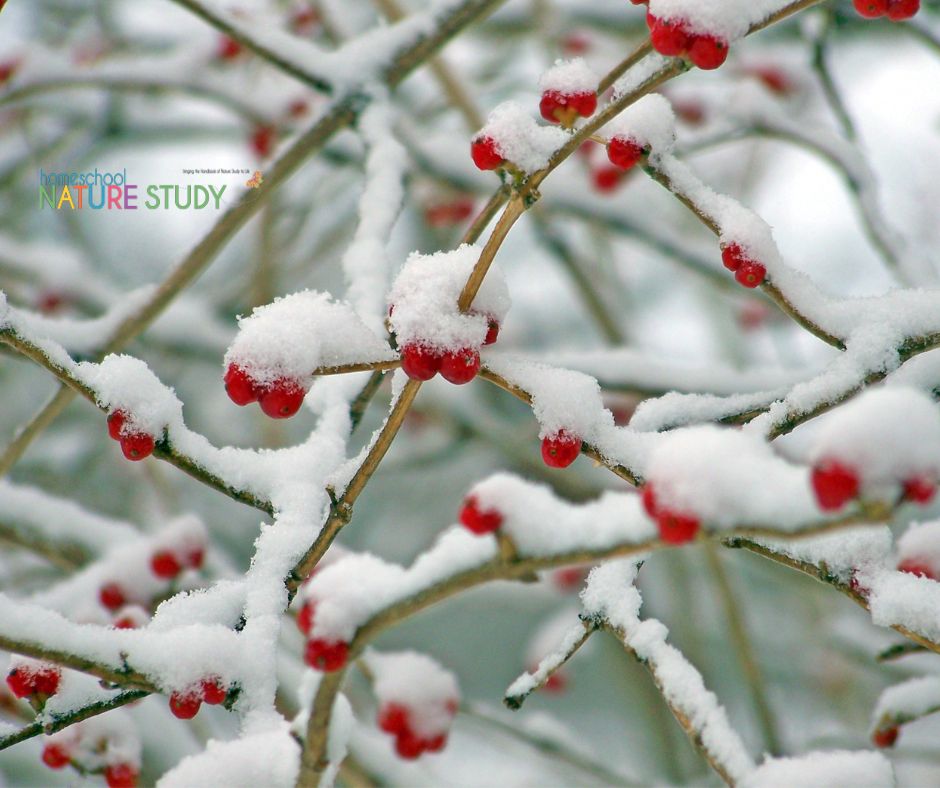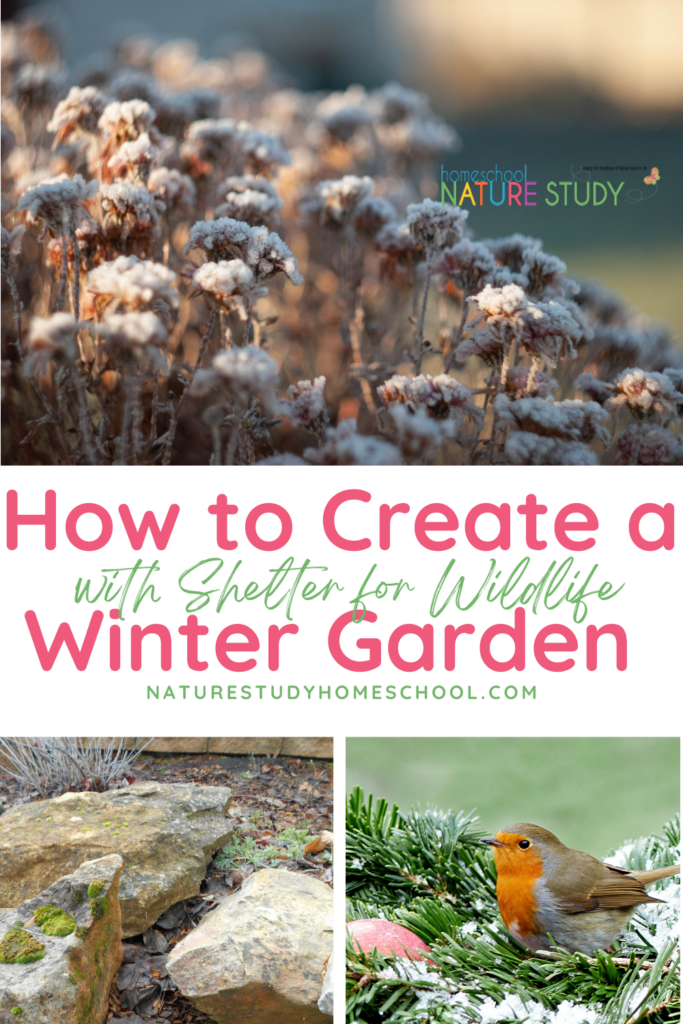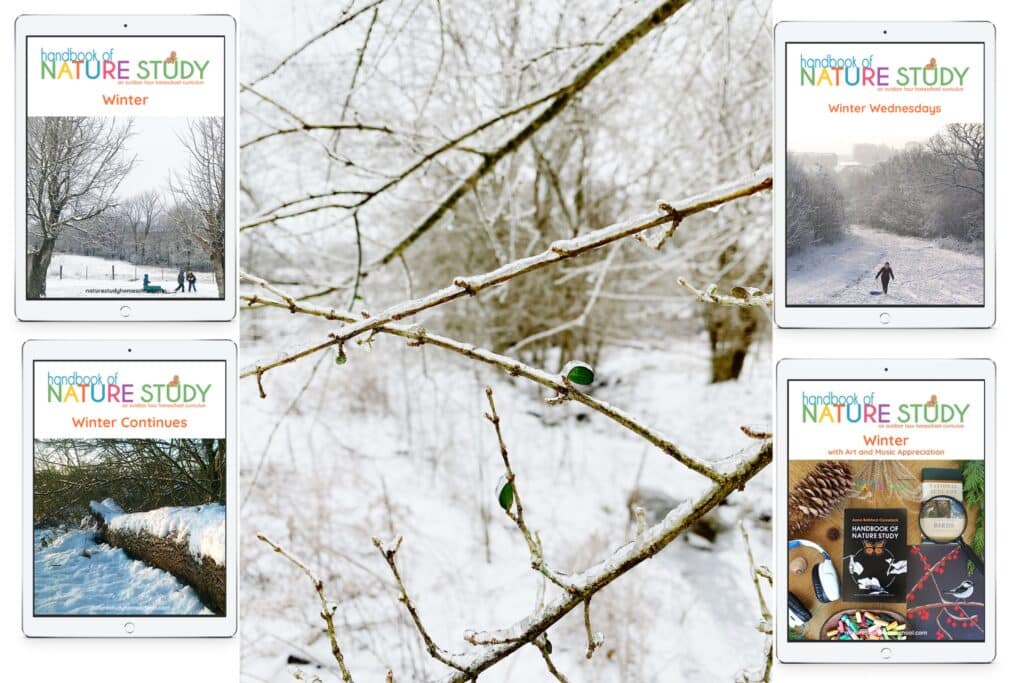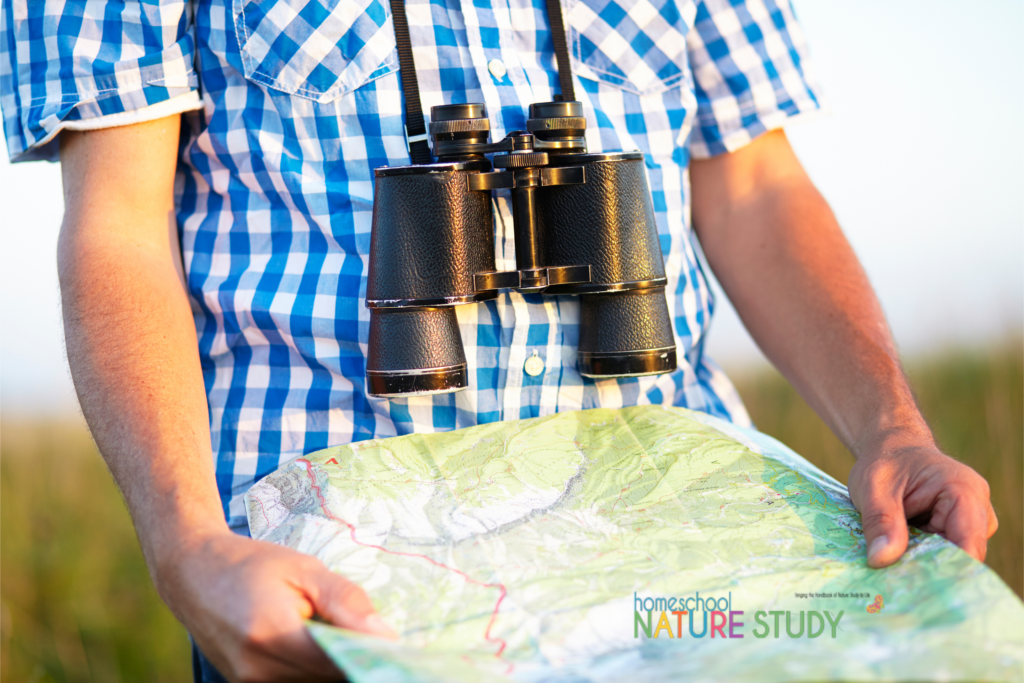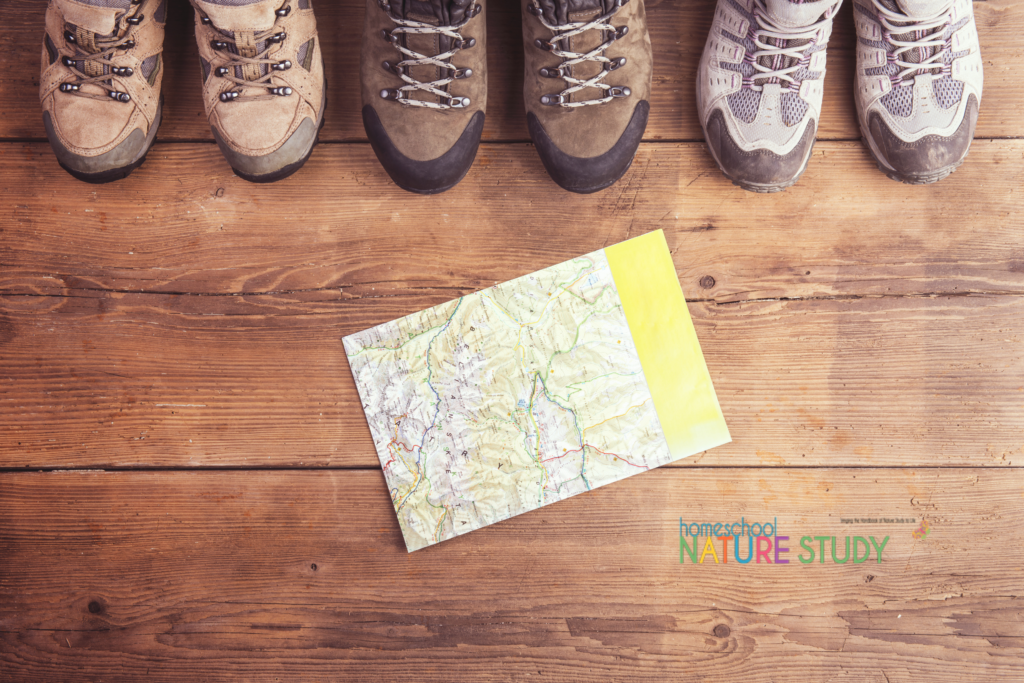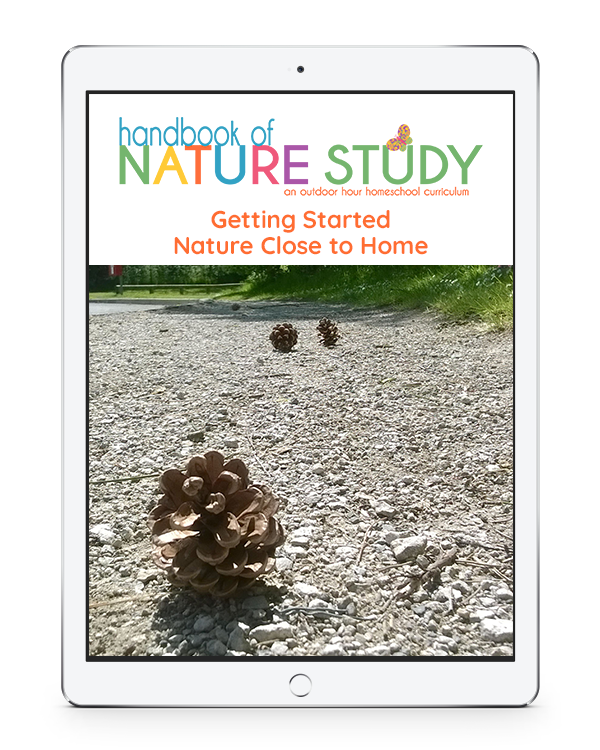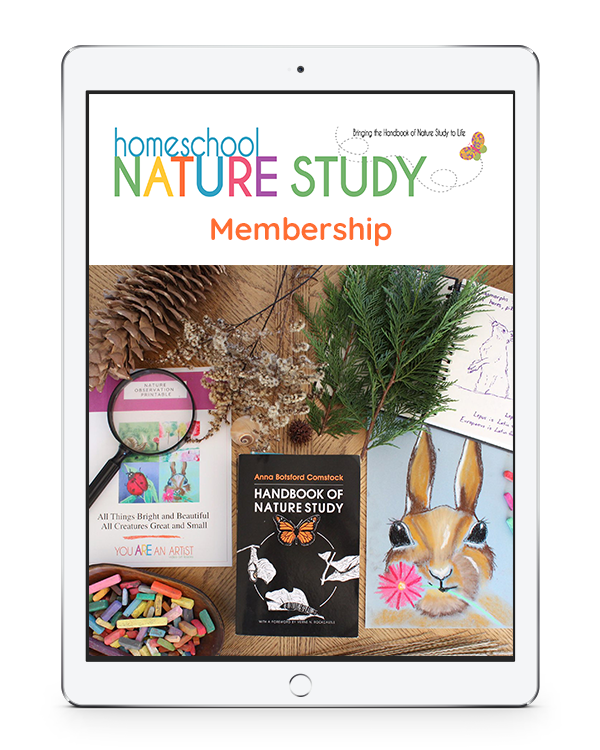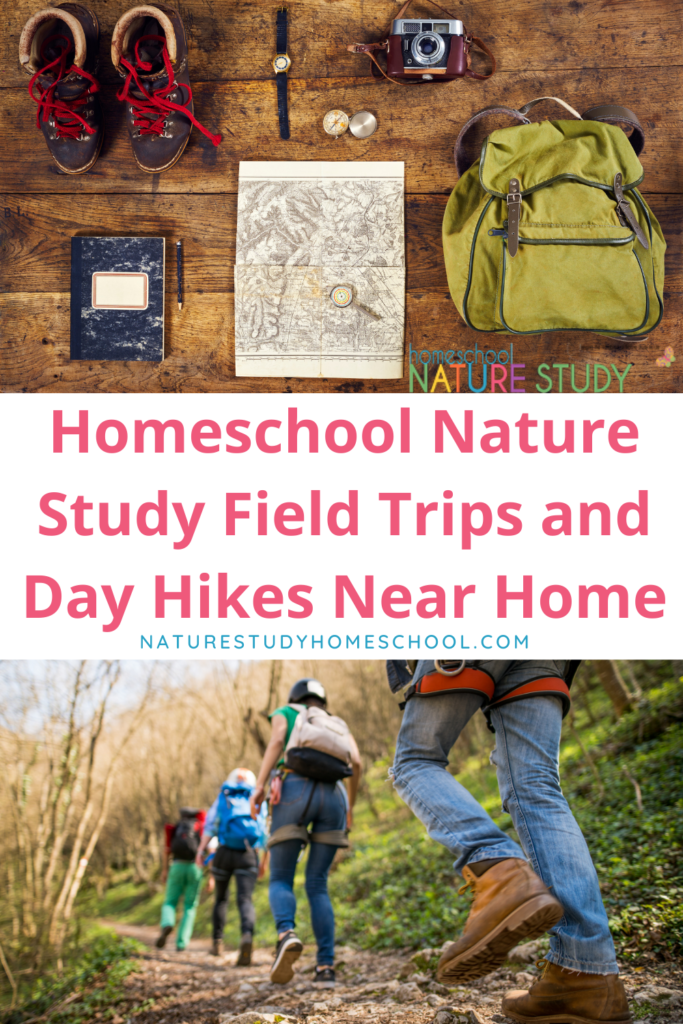
The humble book basket is a simple idea that provides powerful opportunities for learning in your homeschool life. Gathering seasonal or themed nature study books into a basket takes a few minutes of preparation but it can provide hours of enjoyment for your family.
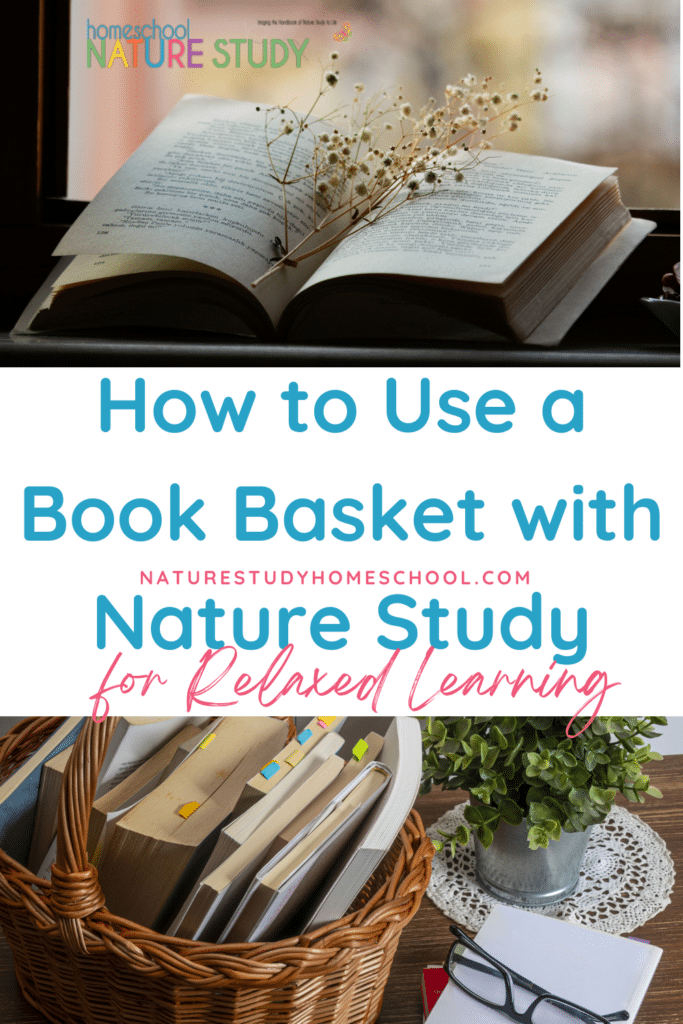
How To Use a Book Basket with Nature Study: Three Ways a Book Basket Facilitates Learning
Just how can a simple book basket spur on homeschool learning? A book basket:
A Book Basket introduces and allows familiarity to nature study topics
Make sure to read or page through any picture books in the basket at the beginning of the month. Demonstrate how to use field guides (or learn how to use them together with your children).
Reference: If you choose books that fit into your monthly nature study themes, you can refer to the books in the
basket as needed to support or go more in-depth as you work through your weekly topics.
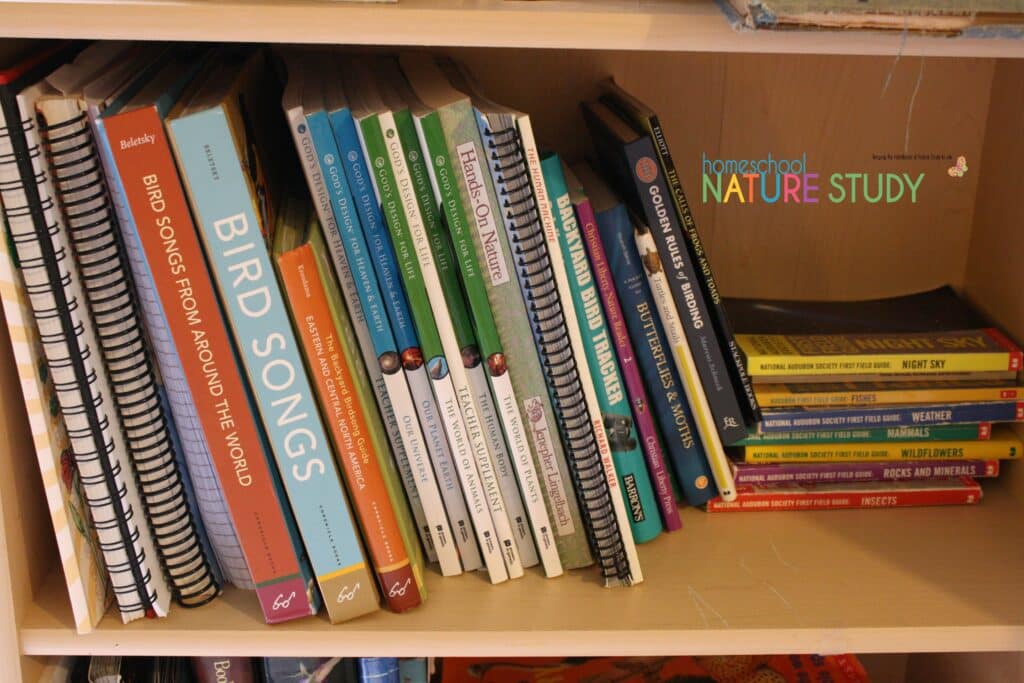
A Nature Book Basket Allows for Independent Learning
Leaving the basket out at a level accessible to your children will allow them to study
the books on their own during their free time.
Suggestions for Getting Started with a Nature Book Basket
Use the ideas included in the Outdoor Hour Challenges to spark topics for your basket each month (current topics). There are suggestions for a bird, mammal, flower, and tree to focus your study on each month.
There is usually a link to a list of books and other materials to use during your circle time or to have on your nature shelf or in your Book Basket.
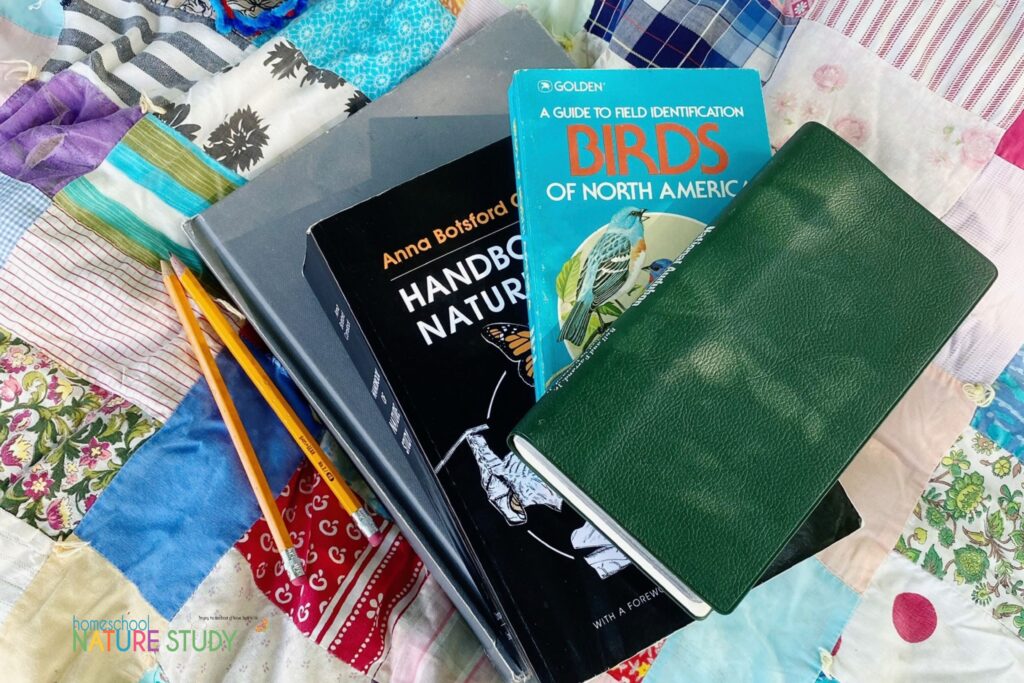
Tips for a Successful Book Basket
- The trick to making a successful and interesting Book Basket is to rotate the books periodically, keeping it fresh for your children.
- Don’t overload your basket since it can lead to a large mess! Keep the number of books appropriate to the ages of your children and train them to put the books back when they are finished.
- Even if you don’t keep your books in a basket, featured books gathered each month and kept on a prominent shelf or placed on a coffee table might entice your children to take a look at some point during the month.
- For older students, putting the books on a shelf may work better.
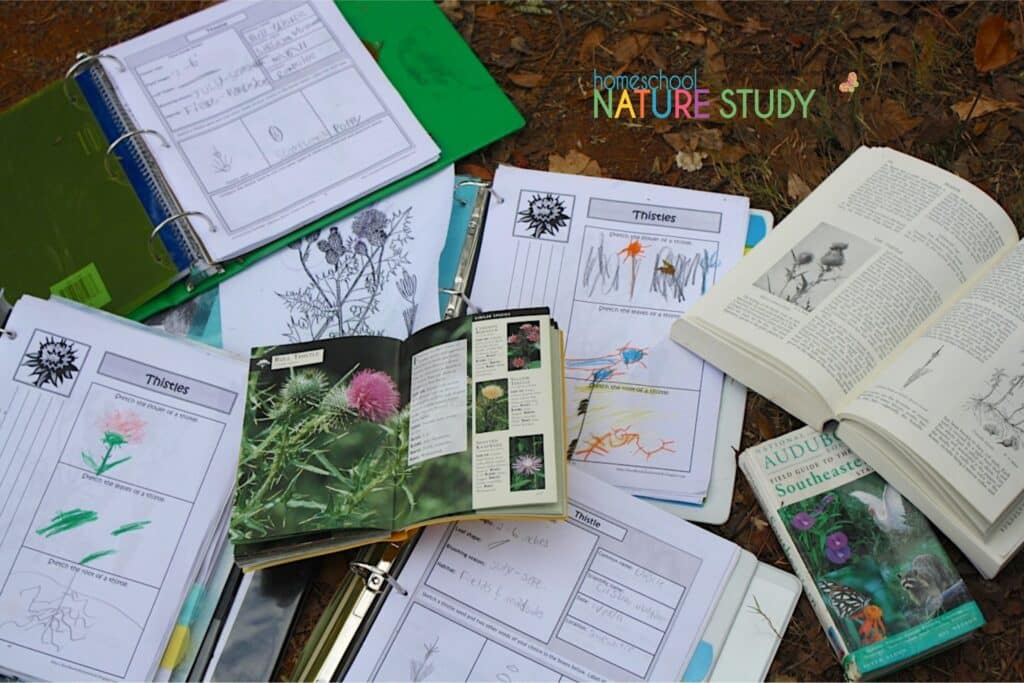
Extended Nature Study Activity: Narration or Nature Journaling
Ask your child to narrate back a main point after reading any book from your Book Basket. Use that point as a written narration in your nature journal and have your child illustrate the point.
More Learning Inspired by Nature Books
From book lists to nature study references, we have a variety of resources to inspire your learning:
How To Create Simple Nature Displays for Fun Homeschool Learning – Many of our nature treasures were found in our own back yard or neighborhood.
A Homeschool Mom’s Best Tips for Organizing Your Nature Library – Using good nature study reference books and literature will be a huge help in nudging along the seeds of a love nature in your child. To help you find what you need when you need it, these are our best tips for organizing your nature library. As the seasons and years pass, they will dig deep into your nature library and become familiar with so many things.
The Ultimate List of Preschool Nature Study Books – While nothing beats experiencing nature first-hand, preschool nature study books are a vital component of our preschool nature studies. We have used both fiction and non-fiction books to introduce a topic, supplement a topic and study a topic in-depth.
The Best Winter Nature Books for Cozy Homeschooling – These are the best winter nature books for cozy homeschooling days. Includes winter nature study suggestions you can do through your window – or for a quick and refreshing outdoor time.
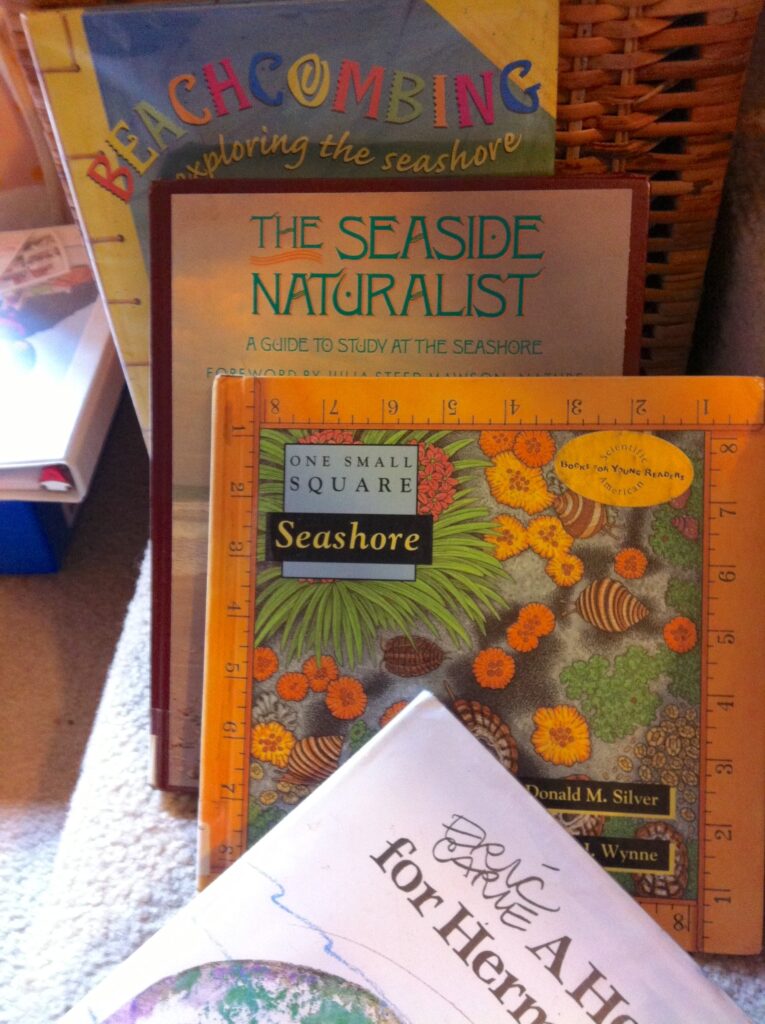
A Summer Nature Themed Book List for Easy Learning – Over the years, our family has built a nature themed library of our favorite and most useful resources. There are picture books featuring the natural world, fiction with a nature theme, and non-fiction reference and activity filled books. Even now with my children all grown and on their own, I use this nature library for my own benefit and enjoyment.
Fall Homeschool Nature Books List – With the changing leaves and beautiful weather upon us, this ultimate list of nature themed books for fall homeschooling is your go-to for the season!
Learn More About Outdoor Hour Challenges with The Handbook of Nature Study
Our Homeschool Nature Study members have access to endless year round nature studies, Handbook of Nature Study references, follow up nature journaling activities, notebook pages and resources to inspire and guide you.
Be inspired. Be encouraged. Get outdoors!
by Barb McCoy, founder of The Outdoor Hour Challenges

